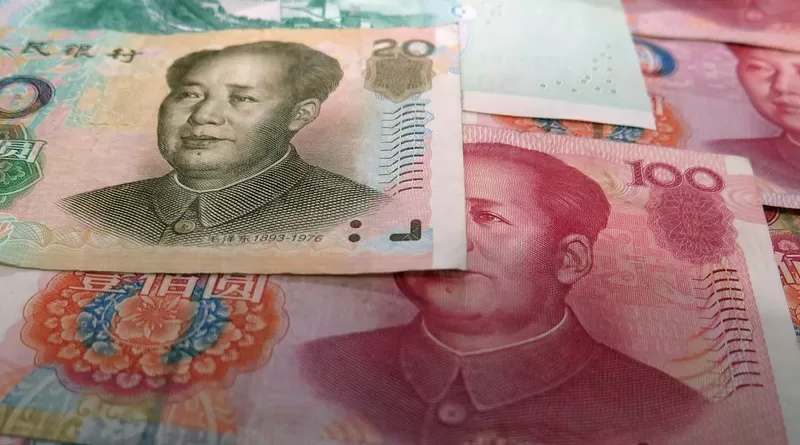Will The Chinese Renminbi Keep Rising? – Analysis
By Zhaoyong Zhang*
The trend of the Chinese renminbi (RMB) rising against the US dollar reached a three-year high in May 2021. This signalled an end to the currency’s depreciation in response to the Trump administration’s trade war with China. Whether the current rally in RMB will be maintained remains a hotly debated topic, especially given the current COVID-19 pandemic-related global economic recovery and the long-term headwinds to China’s growth.
China’s sound economic outlook and strong fundamentals have contributed to this trend. With its economy growing by 2.3 per cent in 2020, China was the world’s only major economy to achieve growth despite COVID-19 lockdowns.
China is expected to take the lead in the global recovery, with domestic consumer spending rising faster than anticipated. The IMF’s October projection indicates that the Chinese economy will grow by 8 per cent in 2021. Recent data shows China’s exports grew faster than expected thanks to the ongoing global COVID-19 recovery and solid global demand.
Relatively high yields offered in China’s bond market, especially in comparison with that in the US market, have made it more appealing to international investors. Currently the Chinese 10-year government bond yields have been hovering around 3.3 per cent, versus about 1.6 per cent for the US 10-year Treasury.
Despite China’s slower than expected third-quarter GDP growth and the widely debated property crisis, RMB exchange rate expectations remain well anchored and strong. The RMB has appreciated over 1 per cent against the US dollar in October to RMB 6.37. Recent progress in RMB internationalisation also helps facilitate short-term capital inflows. This, together with a downward trend of the US dollar index, rising inflation and signs of slowing economic recovery in the United States, were factors supporting the appreciation of the RMB exchange rate.
A stronger RMB aligns with China’s ‘Dual Circulation Economic Strategy’ to expand domestic consumption and home-grown technologies through international trade and investment and become the world’s biggest consumer market. China held its first international import expo in 2018 in Shanghai — the world’s first import-themed national-level expo. Subsequently, the China International Import Expo has become an annual event that promotes the Chinese market to foreign companies. This is widely interpreted as China’s geopolitical and economic response to current US–China relations. The recent recovery helps curb surging commodity prices and dents the impact of imported inflation.
Yet continued appreciation of the exchange rate is not always desirable, especially for China’s exports and manufacturing. Two-way fluctuations are likely to become the norm. Since May 2021 China’s central bank, the People’s Bank of China (PBOC), has repeatedly warned against betting on one-sided moves, emphasising that the RMB exchange rate is determined by market forces and changes in the international financial market. It announced that the foreign exchange reserve requirement ratio for financial institutions would be raised from 5 per cent to 7 per cent for the first time in 14 years, making it more expensive for banks to hold US dollars and curb one-way movement.
Since moving to a managed floating system in 2005, China has begun taking regular steps to reform the RMB exchange rate formation mechanism to allow a greater role for market forces in determining exchange rates. One notable step was the introduction of the central parity rate as the new reference trading spot rate of RMB and the daily band around the central parity rate where trade can take place. The band has been gradually increased to plus or minus 2 per cent by 2014.
There are also signs that the PBOC has been increasingly using explicit communication with the public rather than direct intervention to influence the exchange rate. These market-oriented reforms will render the RMB exchange rate more flexible but less predictable. Supply and demand shifts in global financial markets will increasingly determine the direction of the RMB’s movement. Recent research finds empirical evidence that public information flows have persistent and significant impact on RMB volatility dynamics.
With the market-oriented reform furthered and the managed floating exchange rate regime improved, the RMB exchange rate is expected to become more volatile. The PBOC’s foreign exchange market intervention will increasingly focus on the active use of unconventional methods and monetary policy tools. It will aim at dampening extreme exchange rate volatility and use the exchange rate as an automatic stabiliser to adjust the macro-economy and the balance of payments. Prolonged one-way moves can cause a vicious cycle, undermining China’s long-term growth and development.
A more flexible, market-driven exchange rate would be in China’s interests, especially considering the current challenges both at home and in the world. Keeping the RMB exchange rate stable with two-way fluctuations at ‘an adaptive and equilibrium level’ remains the PBOC’s top priority.
*About the author: Zhaoyong Zhang is Professor of Finance and Economics at the School of Business and Law, Edith Cowan University.
Source: This article was published by East Asia Forum

